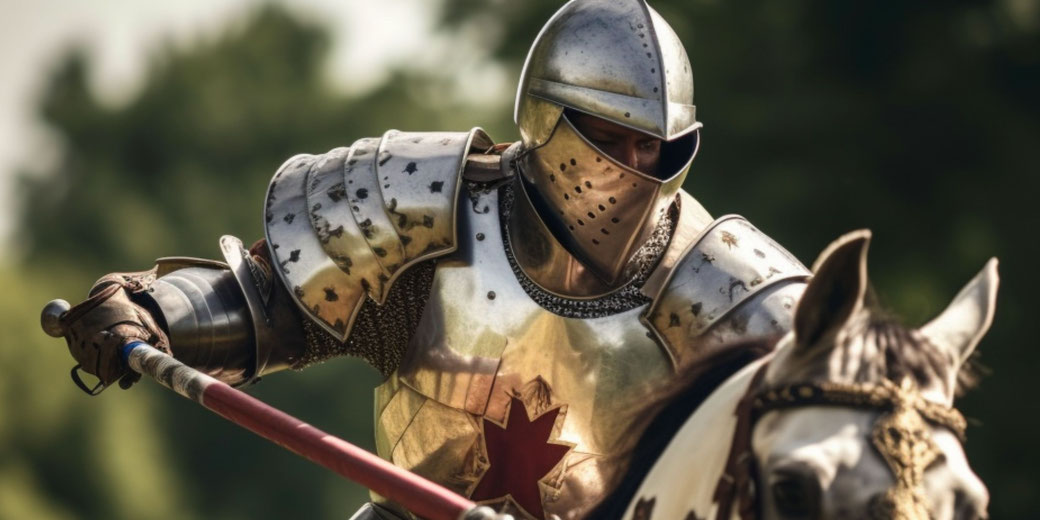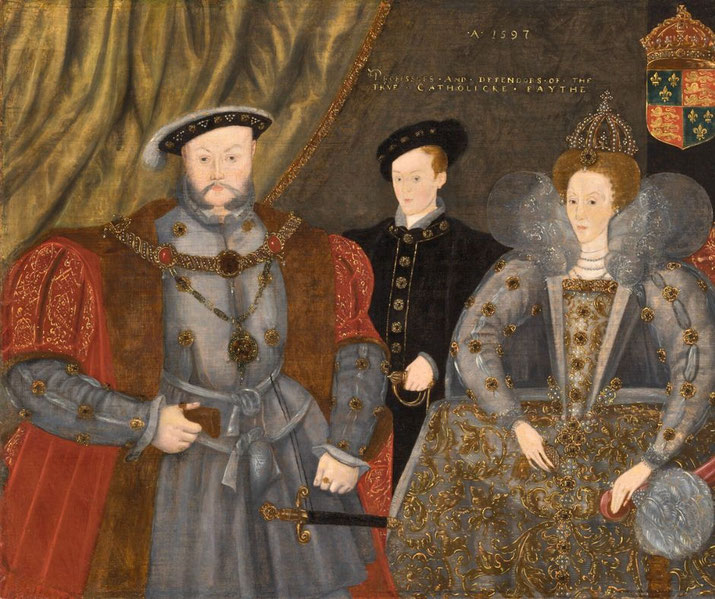Henry VIII's jousting accident: The injury that transformed a kingdom

On a fateful day in January 1536, the charismatic and athletic King of England was violently unhorsed while competing in his favourite sport.
In a matter of seconds, the trajectory of an entire kingdom—perhaps even the course of Western civilization—was altered.
But what really happened on the tiltyard at Greenwich Palace?
Did this accident trigger a psychological transformation in Henry, turning him from a beloved ruler into a despotic tyrant?
And how did this single event shape the future of his marriages, the Church of England, and the Tudor dynasty?
What was jousting and why was Henry doing it?
Jousting was a popular sport among the nobility and royalty of medieval and Renaissance Europe.
It involved two armoured knights on horseback, charging at each other with long wooden lances and trying to knock their opponent off their mount.
Jousting was not only a test of skill and courage, but also a display of wealth and power.
Kings, princes and nobles often participated in jousting tournaments to impress their subjects, rivals and potential allies.

One of the most famous jousters in history was Henry VIII, the king of England from 1509 to 1547.
Henry was an avid sportsman who enjoyed hunting, tennis, archery and wrestling, but his favourite pastime was jousting.
He was known for his strength, agility and bravery on the tiltyard, the field where jousting took place.
He often wore elaborate and expensive armour, decorated with his personal symbols and colours.
He also had a special helmet made for him, with a visor that resembled his own face.
The very real dangers of jousting
Henry VIII loved jousting so much that he continued to practice it even after he became king, despite the risks involved.
Jousting was a dangerous sport that could result in serious injuries or even death.
Many jousters suffered from broken bones, concussions, bruises and cuts. Some were impaled by their opponent's lance or crushed by their own horse.
Henry himself had several close calls and accidents throughout his jousting career, but none of them deterred him from his passion.
The dramatic events of Henry VIII's accident
However, on January 24, 1536, Henry VIII had a jousting accident that would change his life forever.
It happened at Greenwich Palace, his favourite residence and the place where he and his daughter Elizabeth I were born.
Henry was 44 years old at the time, and still in good physical shape. He was jousting against one of his courtiers, Sir Henry Norris, who was also a close friend of his second wife, Anne Boleyn.
According to some accounts, Henry charged at Norris with great force, but missed his target and hit Norris's saddle instead.
The impact caused Henry to lose his balance and fall off his horse. To make matters worse, his horse stumbled and landed on top of him, crushing him under its weight.
Henry lay motionless on the ground, while his attendants rushed to his aid.
The extent of Henry's injuries ... and trauma
There are conflicting reports about what happened next. Some sources say that Henry was unconscious for two hours, and that Anne Boleyn was told that he would die.
Others say that he was not injured at all, and that he got up quickly and resumed the tournament.
The truth is probably somewhere in between: Henry may have been stunned or knocked out for a short while, but not fatally wounded.
Nevertheless, the accident had lasting consequences for Henry and his kingdom.
It is widely believed that the fall caused him to suffer a traumatic brain injury that affected his personality and behaviour.
Before the accident, Henry was a charismatic, generous and promising ruler who enjoyed the love and respect of his people.
After the accident, he became a cruel, paranoid and vicious tyrant who executed many of his friends, enemies and wives.

The accident also affected Henry's health in other ways. It aggravated an old wound on his leg that he had received in another jousting mishap in 1524.
The wound never healed properly and became infected with ulcers that oozed pus and blood.
The pain was unbearable and made Henry unable to walk or ride without assistance.
The wound also emitted a foul smell that repulsed everyone around him.
The leg wound may have also contributed to other medical problems that Henry developed later in life, such as diabetes, gout, obesity and impotence.
Some historians have suggested that Henry may have also suffered from hypothyroidism or syphilis, which could explain some of his symptoms and mood swings.
The consequences for England
Henry VIII's jousting accident of 1536 was a pivotal moment in history that marked the beginning of his decline as a king and a man.
Henry became increasingly despotic, executing not just wives but also long-standing advisors and friends on charges that ranged from treason to heresy.
The atmosphere of fear and suspicion weakened the traditional nobility and centralized power in the hands of the king.
Also, the subsequent dissolution of the monasteries, part of the broader Reformation, had a profound economic impact.
Lands were confiscated and wealth was redistributed, often into the hands of the emerging middle class and loyal nobility.
This changed the economic structure of England and led to the rise of a new social order.
Henry's increasingly erratic behavior also had implications for his marital life and, by extension, the line of succession.
His desperate quest for a male heir led him through six marriages, affecting international alliances and causing domestic strife.
His eventual male heir, Edward VI, was sickly and died young, leading to a period of instability until Elizabeth I took the throne.
Ultimately, Henry VIII's jousting accident is a fascinating example of how a single event can have far-reaching consequences for history.
What do you need help with?
Download ready-to-use digital learning resources
Copyright © History Skills 2014-2024.
Contact via email
With the exception of links to external sites, some historical sources and extracts from specific publications, all content on this website is copyrighted by History Skills. This content may not be copied, republished or redistributed without written permission from the website creator. Please use the Contact page to obtain relevant permission.





